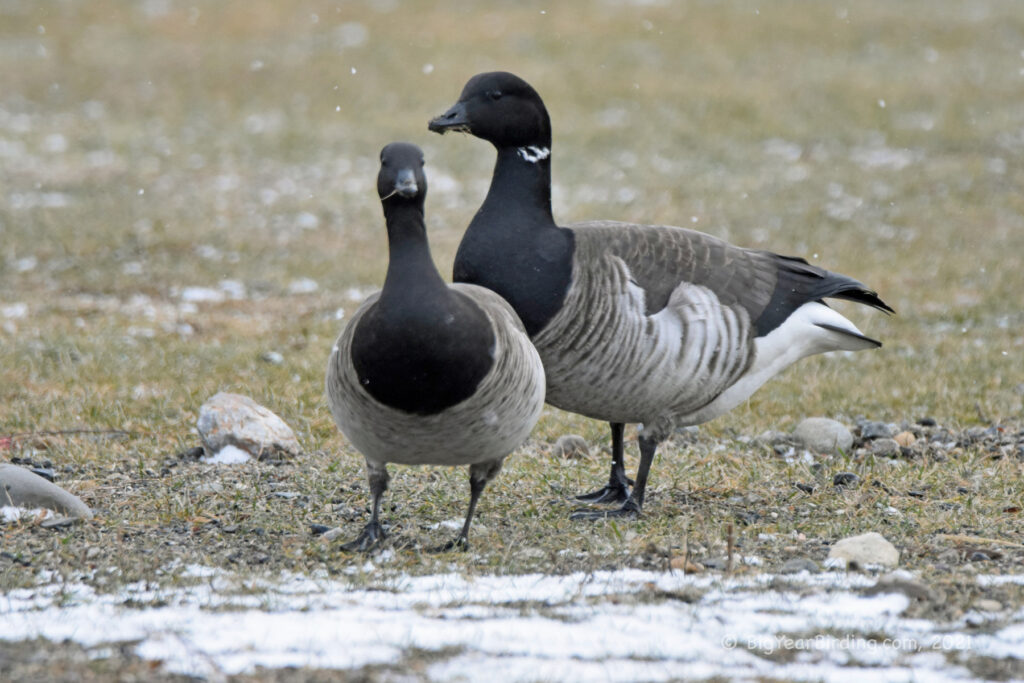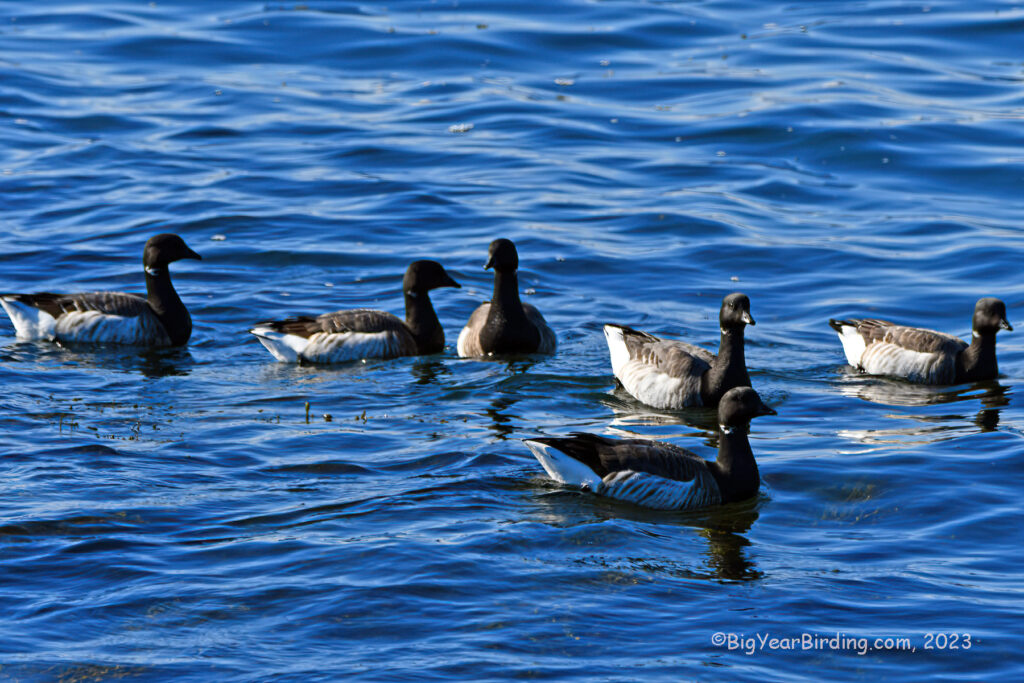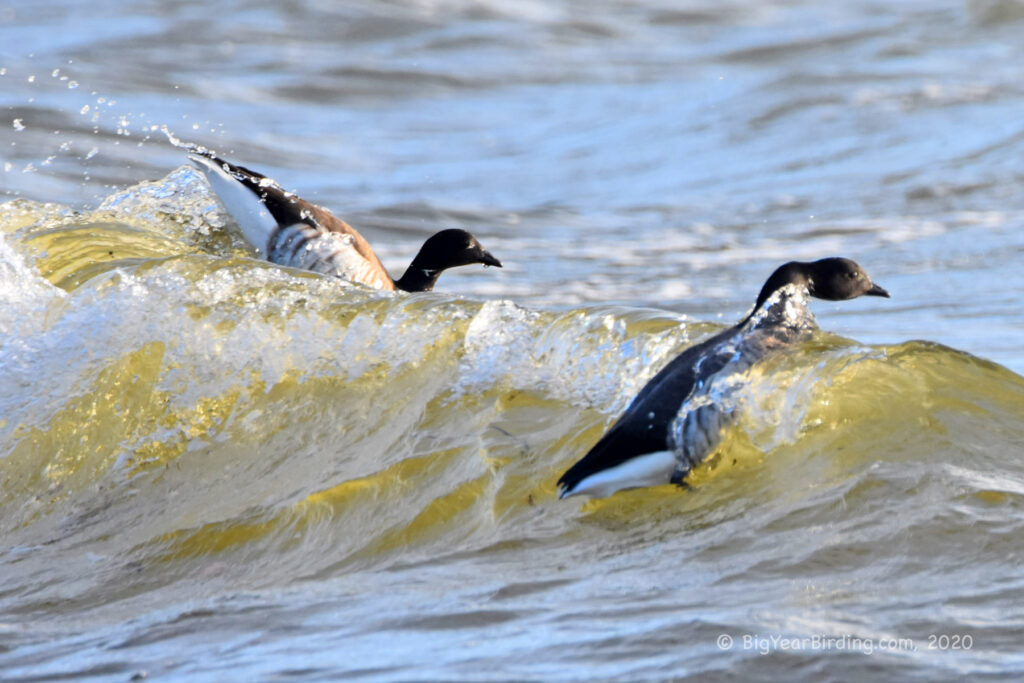
The Brant, also known as the Brent goose, is a medium-sized goose that breeds in the Arctic tundra and winters along the coasts of North America. Adults are about 22-24 inches long and weigh between 2.5-4.5 pounds, with males being slightly larger than females. They have a wingspan of about 48-53 inches.
One of the most distinguishing field marks of the Brant is their dark-colored body and neck, with a white patch on their cheeks and a black beak. They also have a short, dark tail and dark legs. In flight, their underwings are mostly white with a narrow black border along the trailing edge. Juvenile Brant have a more mottled appearance with brownish-gray body feathers and a smaller white patch on their cheeks.
Brant geese have a unique migration pattern, with distinct populations that breed in different areas of the Arctic and winter in specific locations along the North American coast. The Atlantic population breeds in the Canadian Arctic and winters along the Atlantic coast from Virginia to New Jersey, while the Pacific population breeds in Alaska and winters along the Pacific coast from Alaska to Baja California. Some individuals from both populations may also winter in inland freshwater habitats.
During migration, Brant geese fly in flocks and can travel up to 50 miles per hour. They usually migrate along well-established routes and stopover sites where they feed on eelgrass and other aquatic vegetation. They are also known for their distinctive vocalizations, which can be heard as they fly overhead in large flocks.
Overall, the Brant is an iconic species of the Arctic and coastal regions of North America, with distinctive physical characteristics and a fascinating migration pattern. They are also an important species for hunters and birdwatchers alike, and their populations are carefully monitored by conservationists to ensure their long-term survival.

